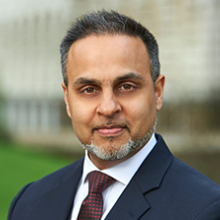Escape from Fixed Costs
New client: he’s had a road traffic accident 5 days ago. He was a motorcyclist and he is aged about 50 years. Car pulling out of a side road into the path of a correctly proceeding motorcycle. C was thrown some distance off his bike into the road. Paramedics attended at the scene and he was taken to hospital by ambulance. He sustained fractures to his ribs and collarbone, a partially collapsed lung and bruising and swelling to his leg. Should be a fairly straight-forward claim, you think. You take his details and the makings of a Claim Notification Form are set. Value ticked for £10k.
The CNF is checked, approved and submitted on the Portal. Just what the “stack ‘em high, fixed costs apply” regime would expect.
The Defence through the Portal comes in about 2 weeks later. It is accompanied by an offer of £12,500 before any medical evidence is obtained. Some 3 months later, D makes an increased offer of £20,000.
Meanwhile, you are working the case. C consults treating medical practitioners and in due course is examined by medico-legal experts. Turns out that, in addition to the fractures (2 to the collarbone, 4 to the ribs) and the partially collapsed lung, C also sustained an internal degloving injury to his left hip, a psychological reaction and required a shoulder replacement joint. By the end of 2018, C is told that he will have to wait about 1 year for his shoulder surgery. The hip injury causes complication with C being passed from orthopaedics to plastics then back to orthopaedics through 2019.
Upon file review, you write to D and put them on notice that the claim has the hallmarks of a multi-track claim given the likely value and medical evidence. A month later, the case drops out of the Portal.
In early 2020, you serve your medico-legal reports. That results in a further offer from D of £35,000. Another medical report disclosed and the offer is increased to £55,000 by April. You file proceedings at Court in June, and by November D increases its offer by Part 36 to £60,000. In December the case is allocated to the multi-track and stayed for further MRI. In March 2021, C accepts D’s last offer.
Fixed costs, right?
Part 36 (36.20) broadly says: a case to which the fixed costs regime applies, fixed costs to C until the end of the relevant period; thereafter, fixed costs to D (and standard basis costs after allocation).
But what about the allocation to multi-track?
The Court of Appeal in Qader v Esure [2016] EWCA Civ 1109 made clear that where a case which started in the Portal is subsequently allocated to the multi-track, the fixed costs regime ceases to apply from the point of allocation, but not with retrospective effect.
You may think that seems unfair for a case which had the hallmarks of the multi-track for some time and was in fact allocated to the multi-track. But according to the Court of Appeal in Hislop v Perde [2018] EWCA Civ 1726, the only rule in Part 36 to apply to these circumstances is indeed CPR 36.20. It does what it says on the tin and any potentially unfair consequences of its application are to be absorbed by the swings and roundabouts approach that a volume driven practice must bear.
So back to your client. You are not worried about the Defendant’s costs as QOCS applies anyway. You are rightly confident that a Part 36 acceptance is not an “order for damages” in the CPR 44.14(1) sense and thus any set-off of the Defendant’s costs against the Claimant’s costs is limited to £0 (see Ho v Adelekun [2021] UKSC 43).
But as to your client’s own recovery, the fixed costs regime clearly applies. Within that regime, there is only one single escape route through CPR 45.29J which states:
45.29J-(1) If it considers that there are exceptional circumstances making it appropriate to do
so, the court will consider a claim for an amount of costs (excluding disbursements)
which is greater than the fixed recoverable costs…
So, the gateway is “exceptional circumstances”. But what is that? Given the widely reported expectation that within months we are going to see an increasing use of the fixed fee regime to cases of significantly higher value and to extend to clinical negligence cases, examples of what might constitute “exceptional circumstances” will be hugely important, given that the jurisprudence has been keen to avoid precise definition. Those examples have thus far been rare.
In a recent case of Hallsworth v EUI Limited, before Regional Costs Judge Woodburn in the County Court at Bristol on 27 September 2022 the successful CPR 45.29J application suggests that circumstances resembling the above scenario are indeed exceptional. The injuries were considered to be life altering, albeit not life changing, and the case was considered to be distinct from those that one would expect to see on the fast track (being the target of the fixed costs regime). The gateway required the application of the benefit of hindsight and reasonable and proportionate costs in excess of the fixed cost regime would be permitted.
Shaman Kapoor acted for the receiving party in Hallsworth v EUI Limited (Claim No: G76YX830) and was instructed by Victoria Yeomans at Kain Knight Plc and Minster Law Limited.

